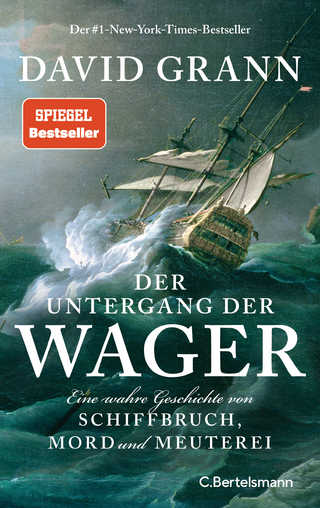
The New Cambridge History of Islam: Volume 3, The Eastern Islamic World, Eleventh to Eighteenth Centuries
Cambridge University Press (Verlag)
978-1-107-45697-6 (ISBN)
This volume traces the second great expansion of the Islamic world eastwards from the eleventh century to the eighteenth. As the faith crossed cultural boundaries, the trader and the mystic became as important as the soldier and the administrator. Distinctive Islamic idioms began to emerge from other great linguistic traditions apart from Arabic, especially in Turkish, Persian, Urdu, Swahili, Malay and Chinese. The Islamic world transformed and absorbed new influences. As the essays in this collection demonstrate, three major features distinguish the time and place from both earlier and modern experiences of Islam. Firstly, the steppe tribal peoples of central Asia had a decisive impact on the Islamic lands. Secondly, Islam expanded along the trade routes of the Indian Ocean and the South China Sea. Thirdly, Islam interacted with Asian spirituality, including Hinduism, Sikhism, Buddhism, Taoism and Shamanism. It was during this period that Islam became a truly world religion.
David Morgan is Professor of History and Religious Studies in the Department of History, University of Wisconsin-Madison. He is the author of The Mongols (2nd edition, 2007) and Medieval Persia 1040–1797 (1988), and is General Editor of Cambridge Studies in Islamic Civilization. Anthony Reid is a Southeast Asian historian now again based at the ANU, Canberra, but previously at NUS in Singapore (2002–9) and UCLA in Los Angeles (1999–2002). His recent books include Southeast Asia in the Age of Commerce (2 vols, 1988–93), Charting the Shape of Early Modern Southeast Asia (1999), An Indonesian Frontier: Acehnese and Other Histories of Sumatra (2004), and Imperial Alchemy: Nationalism and Political Identity in Southeast Asia (1999).
Introduction David Morgan and Anthony Reid; Part I. The Impact of the Steppe Peoples: 1. The steppe peoples in the Islamic world Edmund Bosworth; 2. The early expansion of Islam in India André Wink; 3. Muslim India: the Delhi sultanate Peter Jackson; 4. The rule of infidels: the Mongols and the Islamic world Beatrice Forbes Manz; 5. Tamerlane and his descendants: from Paladins to Patrons Maria E. Subtelny; Part II. The Gunpowder Empires: 6. Iran under Safavid rule Sholeh A. Quinn; 7. Islamic culture and the Chinggisid Restoration: Central Asia in the sixteenth and seventeenth centuries R. D. McChesney; 8. India under Mughal rule Stephen Dale; Part III. The Maritime Oecumene: 9. Islamic trade, shipping, port-states and merchant communities in the Indian Ocean, 7th-16th centuries Michael Pearson; 10. Early Muslim expansion in South East Asia, eighth to fifteenth centuries Geoffrey Wade; 11. Islam in China to 1800 Zvi Ben-Dor Benite; 12. Islam in Southeast Asia and the Indian Ocean littoral, 1500–1800: expansion, polarisation, synthesis Anthony Reid; 13. South East Asian localisations of Islam, and participation within a global Umma, c. 1500–1800 Michael Feener; 14. Transition: the end of the old order - Iran in the eighteenth century Gene Garthwaite; Part IV. Themes: 15. Conversion to Islam Richard W. Bulliet; 16. Armies and their economic basis in Iran and the surrounding lands, ca. AD 1000–1500 Reuven Amitai; 17. Commercial structures Scott C. Levi; 18. Transmitters of authority and ideas across cultural boundaries, eleventh to eighteenth centuries Muhammad Qasim Zaman.
| Erscheinungsdatum | 27.06.2023 |
|---|---|
| Reihe/Serie | The New Cambridge History of Islam |
| Zusatzinfo | 10 Maps; 9 Halftones, unspecified |
| Verlagsort | Cambridge |
| Sprache | englisch |
| Maße | 152 x 229 mm |
| Gewicht | 1073 g |
| Themenwelt | Geisteswissenschaften ► Geschichte ► Allgemeine Geschichte |
| Geisteswissenschaften ► Religion / Theologie ► Islam | |
| ISBN-10 | 1-107-45697-5 / 1107456975 |
| ISBN-13 | 978-1-107-45697-6 / 9781107456976 |
| Zustand | Neuware |
| Haben Sie eine Frage zum Produkt? |
aus dem Bereich


